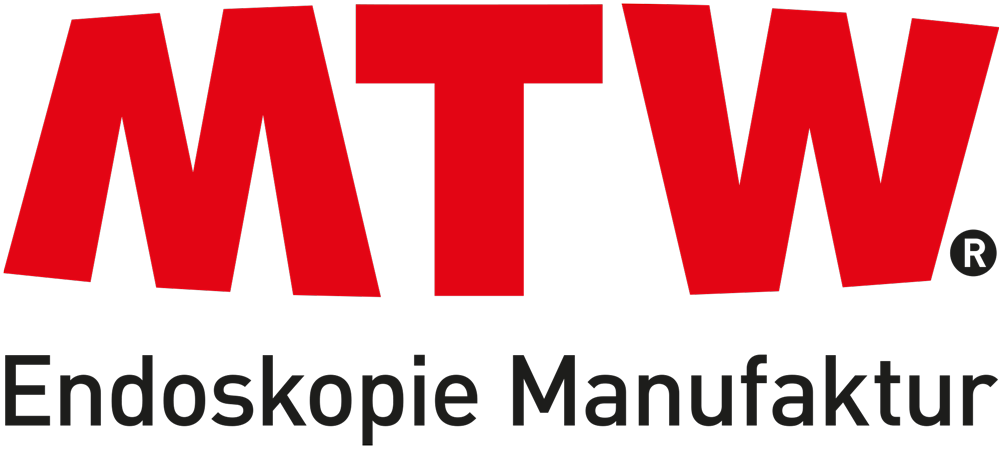Ring Knife
The ring knife has been developed to provide access to the target lesion using RF current in connection with an endosonographic intervention. The ring knife set consists of a ring knife with pushed and connected pusher and a preloaded 3-flap straight endoprosthesis. After creating access to the target lesion, the endoprosthesis can be placed for drainage without changing instruments.
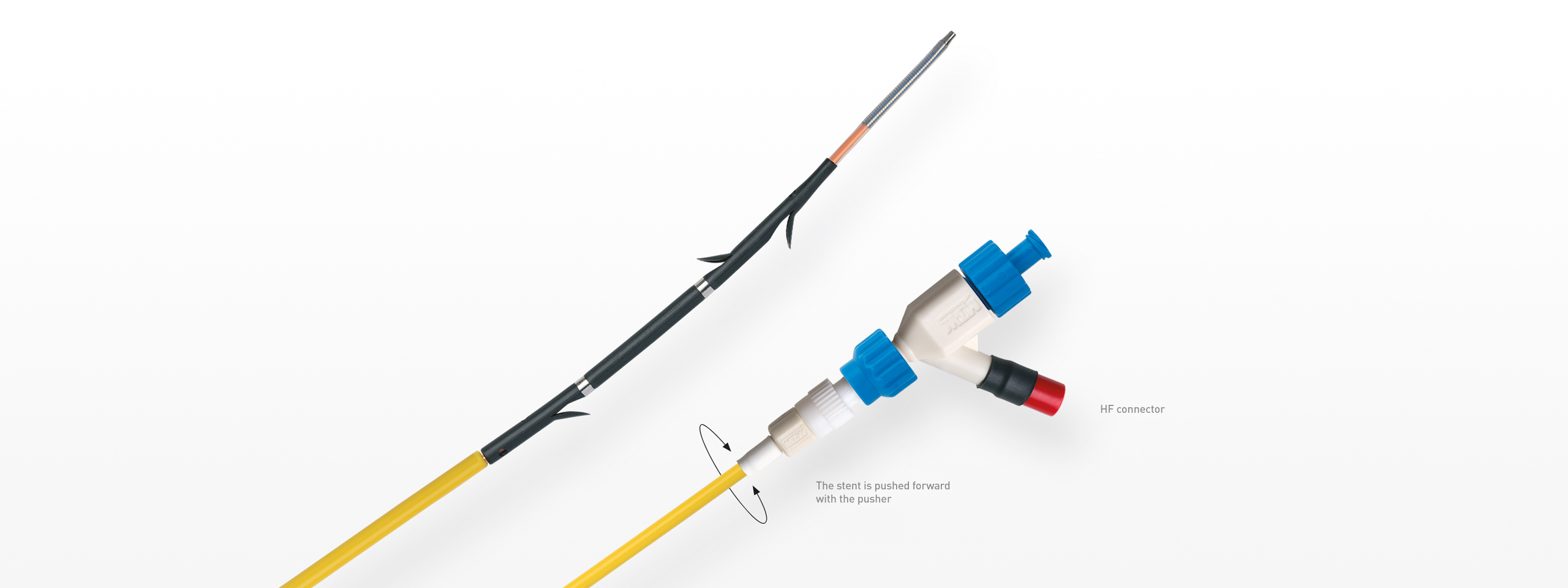
Example of Use
Ring knife for EUS-guided internal bile duct and pancreatic duct drainage
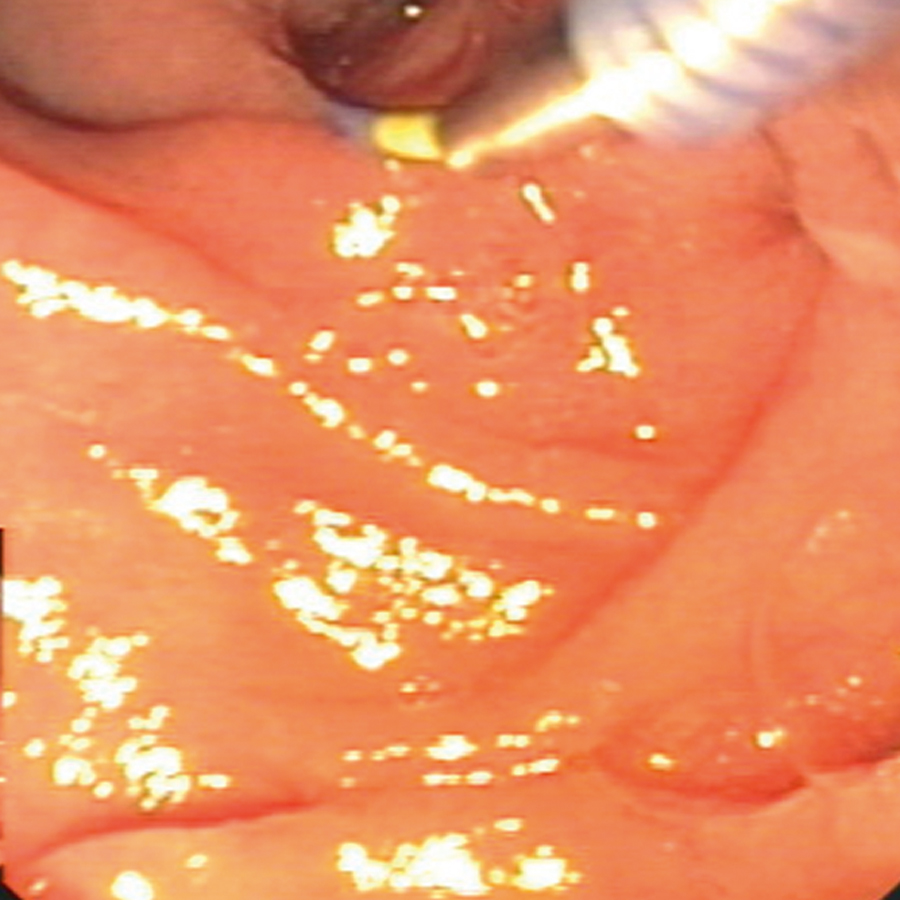
Figure 4
Jaundice caused by local recurrence of gastric cancer:
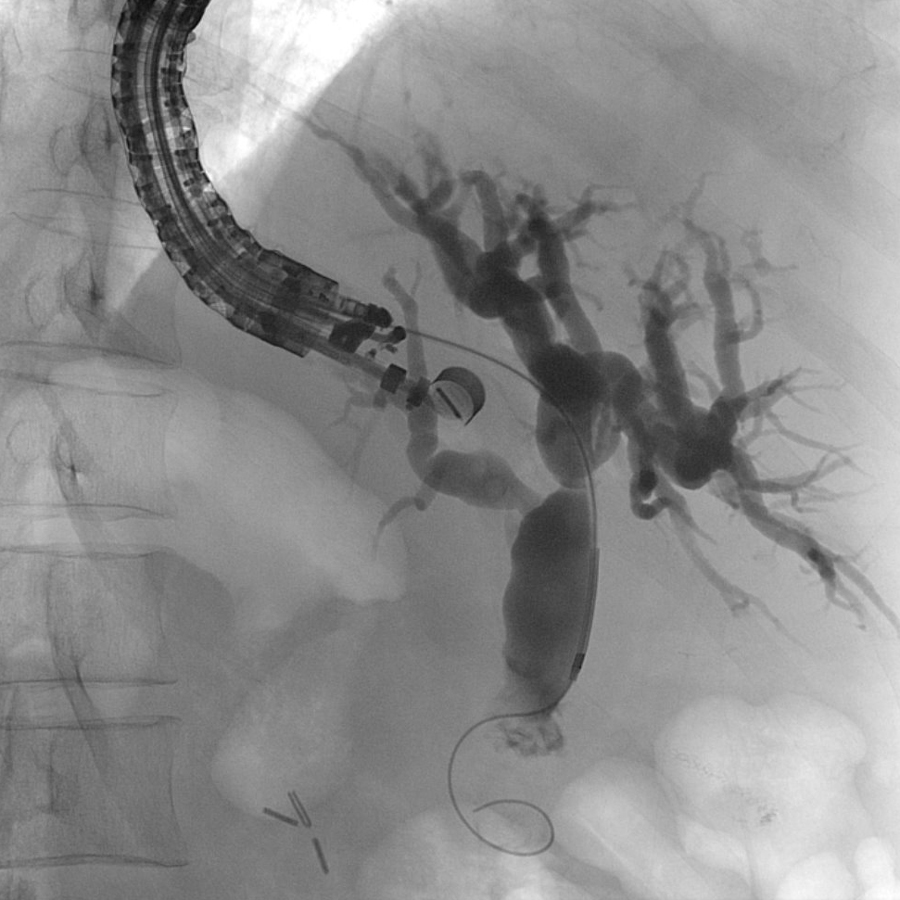
Figure 5
X-ray control of the ring knife feed:
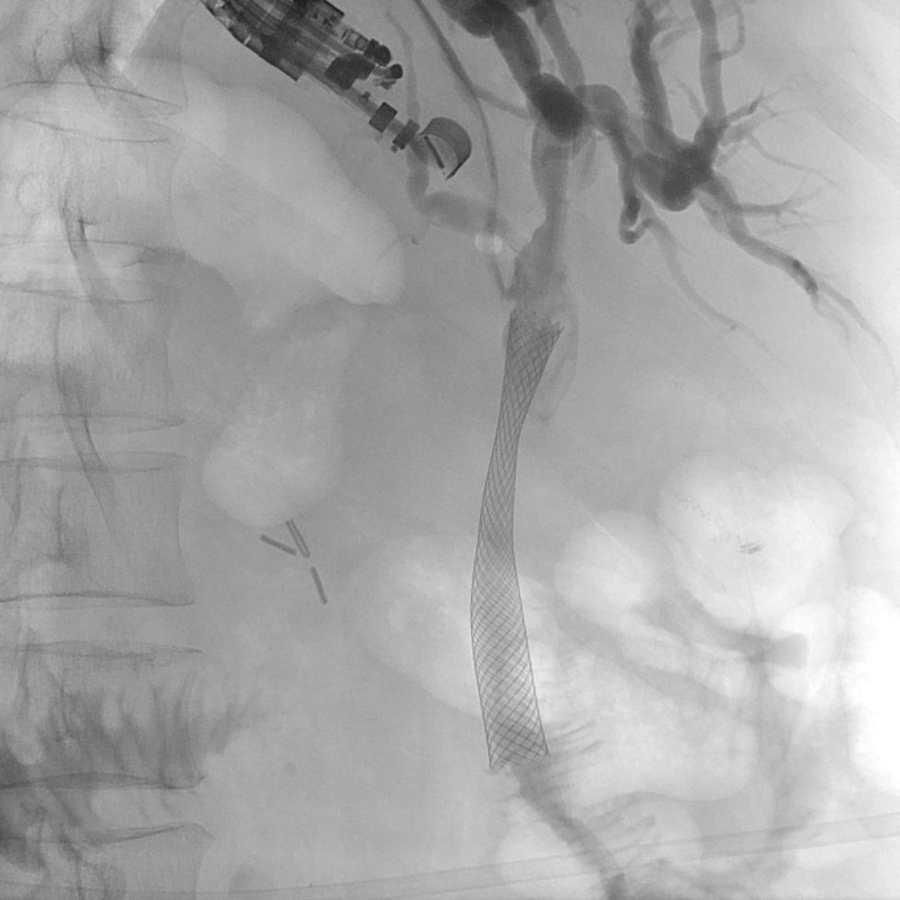
Figure 6
Transjejunal-transhepatic insertion of a covered metal stent. Bridging of the tumor stenosis of the bile duct and restorati-on of the orthograde drainage.
Example of Use
Ring knife for the therapy of pseudocysts

Figure 1
After EUS-FNA of a pseudocyst, the ring knife is positioned above the lying guide wire and a cystostomy is performed.
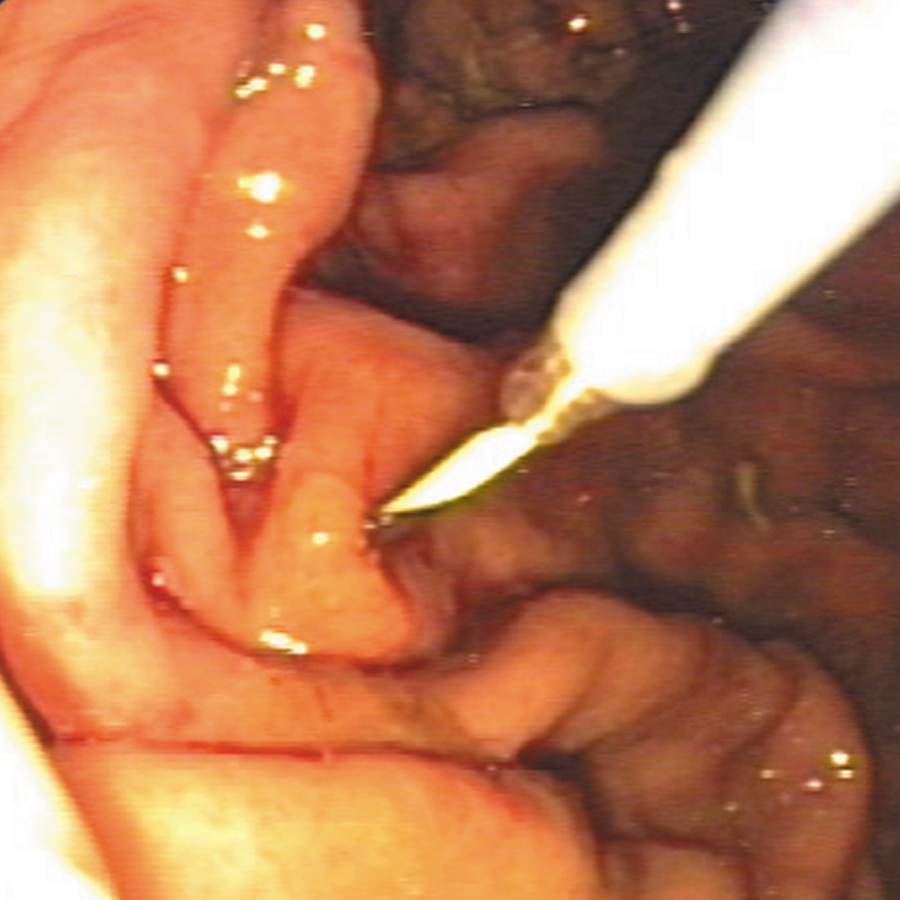
Figure 2
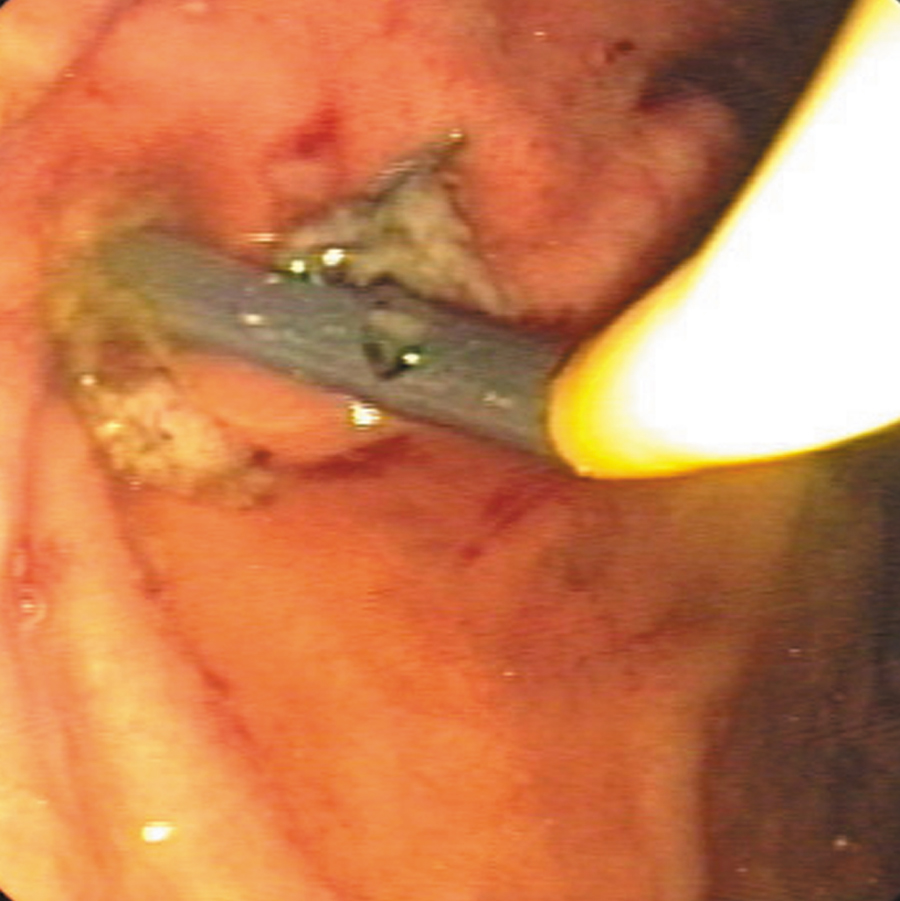
Figure 3
After the cystostomy a drainage is introduced via the ring knife support system during the same session.
